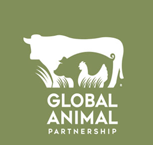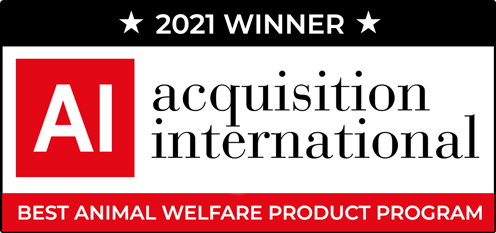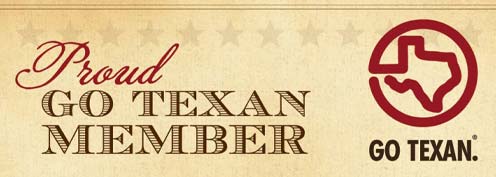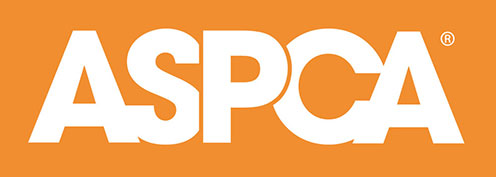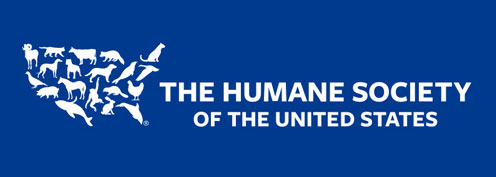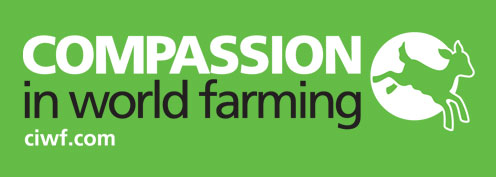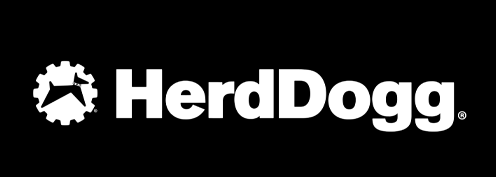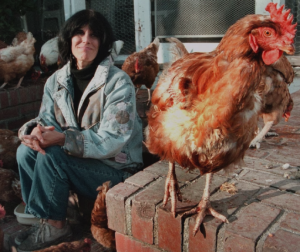Is G.A.P. an animal advocacy group? How does animal welfare differ from animal rights?
Animal welfare is a science that acknowledges the impact that a wide variety of factors, including genetics, management, and environment, have on a sentient being (animals are conscious of the world around them). Proponents of animal welfare believe that if animals are used (for food production, as pets, for work, etc.), we have a moral obligation to raise them in ways that support the notion that animals are sentient. At G.A.P., our goal is to drive continuous improvement of on-farm animal care and welfare by working closely with the farming community.
In contrast, animal rights believers do not approve of animal use in any way (e.g. for food production, as pets, for work). People in these communities push for a reduction in the number of captive animals, and promote ideals in line with vegetarianism and veganism. The ultimate goal of these ideals is to eliminate animal use regardless of reform efforts or overall animal care and welfare.
How does G.A.P.'s Animal Welfare Certified program work?
The Program has different tiers – or steps – that represent the different ways and types of farming systems in which animals are raised on farm. Every farm involved in raising beef, cattle, chicken, turkey, pork, lamb, goat, bison, and laying hens has to have a third-party audit to verify they meet the G.A.P. standards, every 15 months. Each farm is certified to the highest step level they can achieve and is encouraged to move up the step tiers whenever possible. The Program is a way for consumers to be reassured that the meat and eggs they buy in stores and at restaurants has been raised to standards that provide for the animal and the environment in which they live.
What are the consumer benefits of G.A.P.'s Animal Welfare Certified program?
Our G.A.P. Animal Welfare Certified labels provide a clear description of how animals are raised – whether that be indoors, indoor/outdoor or pasture raised. Our innovative rating system promotes continuous improvement in animal agriculture while linking consumers with the farming practices they choose to support.
Why did G.A.P. choose to work with third-party certification companies instead of auditing and certifying on its own?
As the standard-setter, we feel that working with authorized, independent certifiers strengthens the integrity of the program by removing any conflict of interest, which benefits the producers, retailers, and consumers alike.
How can I tell if a product is G.A.P. Certified?
 Look for the G.A.P. label on all packaged products containing meat or meat ingredients and look for signs at the meat counter, deli, or prepared food sections of your grocery store, and on the menus of the restaurants where you eat.
Look for the G.A.P. label on all packaged products containing meat or meat ingredients and look for signs at the meat counter, deli, or prepared food sections of your grocery store, and on the menus of the restaurants where you eat.
Is the G.A.P. animal welfare labeling program only for Whole Foods Market?
No. Whole Foods Market has played a vital role in the creation of G.A.P.’s Animal Welfare labeling program and continues to be a valued retail partner, but Global Animal Partnership is a separate, non-profit organization, governed independently. Now, more than ever, farm animal welfare is emerging as an important pillar in the retail and foodservice sector. And we are working to expand the reach of our program to new retailers, foodservice establishments, and new products and brands.
I’ve seen a Certified Humane label on some meat products. What's the difference between G.A.P. and Certified Humane?
Both offer standards and a labeled product programs, but there are key differences:
- IF WE DON’T SEE IT, WE DON’T CERTIFY IT! G.A.P. requires that 100% of farms are audited to earn initial certification. After that, 100% of farms are audited every 15 months, allowing us to see animals in all 4 seasons over a 5-year period. Certified Humane uses a ‘group model’ for farm certification. This allows for as few as 10% of the farms to be audited, but 100% of farms are still certified. That’s an important difference.
- Continuous improvement is a fundamental part of the G.A.P. program. We believe good animal welfare is achievable at every Step level with indoor and outdoor systems. Our program gives farms a way to move up to achieve higher Step ratings if they choose to. On the other hand, Certified Humane is a pass/fail program, which means that farms either meet the standard or they don’t. Their program is not tiered like G.A.P.’s.
- G.A.P. uses third-party, independent certifiers to audit each and every farm. Certified Humane has an internal auditing team that audits a sample of the farms they certify. We feel that using independent auditors ensures the integrity of our program.
Are G.A.P. certified products organic?
Under our G.A.P. Animal Welfare Certified program, some farms and ranches may also hold organic certification but we do not require them to be certified organic.
Are G.A.P. certified products non-GMO?
Under our G.A.P. Animal Welfare Certified program, some farms and ranches may also hold non-GMO certification but we do not require them to be certified non-GMO.
Does animal welfare impact meat quality and flavor?
Health & productivity, natural living and emotional well-being are at the core of G.A.P.’s farm animal welfare standards. Improving the lives of farm animals means that regardless of animal type, step level or type of system, G.A.P. standards are designed to help reduce stress with good management practices from birth/hatch through transport. Less stress across the entire life cycle results in better meat quality and flavor.
Why aren’t there G.A.P. animal welfare standards for all meats I consume?
Stay tuned! We recently launched and piloted standards for dairy cows and we’re about to announce new welfare standards for farmed salmon. As more brands source raw materials from G.A.P. Certified farms and label their products, we will add these brands to our For Shoppers page so you can look for them when you shop. Don’t forget to check out our For Pet Parents page for G.A.P. Certified pet food brands too! Thanks for helping us #MakeitGAP!
What is the Better Chicken Project?
Many modern breeds of broiler chickens can reach market weight (~6 lbs) in less than 6 weeks. Hatching at only 0.1 lbs (1.6 oz), this means that in a matter of weeks, broiler chicks are 60 times heavier than their hatch weight. Their growth rate has increased dramatically in the last few decades – mainly thanks to genetics (specific breeding programs) and improved nutrition. Though this improvement in growth efficiency has led to cheaper chicken meat production, there is some concern that the poorer welfare outcomes of these highly efficient birds has been an unintentional consequence of this genetic selection. Heavy body weights at such a young age put excessive strain on developing bones and organs. Broiler chickens are often susceptible to leg problems that lead to lameness and pain, as well as heart problems including heart attacks and ascites (buildup of fluid in the body cavity).
Though growth rate has been implicated as the main welfare insult, the solution isn’t just about controlling growth rate. For example, growth rate can be controlled to some extent via nutrition and dietary regimes as well as lighting schedules, though doing so can create another set of welfare problems, including hunger and hunger-related behaviors. In addition, just because certain breeds grow more slowly than others, there is no guarantee that other aspects of welfare are improved. Therefore, it is more than just finding “slow grow” breeds – it’s about ensuring that all aspects of welfare are considered, hence the “Better Chicken Project”.
G.A.P.’s Executive Director, Anne Malleau, knew there was a need for a large-scale, comprehensive study and to produce publicly-available research on breed differences – something that had previously only been done on a piecemeal basis. In order to reduce difficulties in assessing data coming from multiple studies, Anne knew it would be best to collect the data on a wide range of parameters, including those associated with welfare and production, all in one study. In 2016, G.A.P. engaged the world-renowned poultry research team at the University of Guelph. Together, with the invaluable help of the breeding companies, including Aviagen, Hubbard, and Cobb-Vantress, G.A.P. and the University started the initial plans for the project. Though G.A.P. played a major role in funding and planning the study, the data collection and analyses are being independently conducted by researchers at the University.
For more information and regular updates, click here.
Does G.A.P. have a Scientific Advisory Committee? If so, what do they do?
Yes! G.A.P.’s Scientific Advisory Committee (SAC) is a hand-selected group of scientists with expertise in the behavior and welfare of the animals covered by G.A.P.’s standards (beef, pig, chicken, turkey, sheep, laying hens, and fish (coming soon!). The SAC meets with the G.A.P. team on a regular basis to discuss new findings, research, and technologies relating to animal welfare, so that our standards and program continue to evolve to remain the most comprehensive in the industry.
I’d like to support G.A.P.! How can I get involved?
Thank you! As a nonprofit, 501(c)(3) organization, G.A.P. needs your financial support to continue to encourage more farmers to raise their animals to G.A.P. animal welfare standards and encourage more retailers and brands to carry and use G.A.P. certified products. Donations can be made via our secure donation page or through the mail. We also welcome you to subscribe to our e-newsletter and follow us on Facebook, Instagram and Twitter.
Business/LPA
I see products that look the same in different stores, but one pack has a G.A.P. label and the other one doesn't. How come?
Packaged items bearing a G.A.P. label are certified through our Labeled Product Authorization program. That means meat & poultry ingredients come only from G.A.P. certified sources and strict chain of custody protocols are followed at each point from farm to package, ensuring authenticity of the claim. If the G.A.P. label is not displayed on package, the product is not certified.
I'm a foodservice company who wants to add animal welfare to my restaurants and/or commissaries. How can I get started?
G.A.P. for foodservice is a hot commodity! Whether you’re looking for help to draft your first policy, guidance to develop a supply strategy, or you’re ready to add G.A.P. to your menu tomorrow, we are ready for you. G.A.P. is the business solution for all of your animal welfare needs. Email us at LPA@globalanimalpartnership.org and let’s get started.
I'm interested in using G.A.P. Certified ingredients in my product. Do I need to find a raw materials producer before talking to G.A.P.?
No, the G.A.P. business team can help connect you with the right producer in the right location depending on your production needs and desired certification level. With over 20 years of experience in the meat industry, we have detailed knowledge of the supply chain from farm to fork.
My company would like to actively support G.A.P.'s mission to improve farm animal welfare, but I don't sell a meat product. How can I get involved?
We encourage brands to become G.A.P. mission-based partners if they would like to support and market our program to consumers. In return for a portion of your sales proceeds, we approve use of our label on your product or website to demonstrate your commitment to farm animal welfare.
Does G.A.P. charge a licensing fee to use the label?
Yes, G.A.P. charges a modest fee per case for ongoing use of our label on your product. This covers the label approval process and ongoing marketing support for the program.
Does my production facility need to be audited in order to gain approval to use the G.A.P. certified label?
Yes, we require all production facilities to apply for USDA-FSIS approval to use the G.A.P. Animal Welfare Certified claim on your package. This means that you will need to meet segregation protocols and labeling requirements at your production facilities to ensure that G.A.P. certified raw materials are properly differentiated from other materials, so your product is accurately labeled.
Producers
I’m a producer interested in becoming G.A.P. certified. What do I need to do?
We recommend following these steps:
- Download and review the G.A.P. Standards.
- Determine what Step level you are able to achieve (pro tip: using the Audit Prep Tool can be helpful at this stage!)
- Complete our application for each operation seeking G.A.P. certification.
- G.A.P. will put you in touch with our certifying partners. We work with independent, third-party companies to conduct audits and make final decisions on certification. These companies send trained, experienced auditors to your farm to determine compliance to G.A.P.’s standards. Each company has their own pricing structure, but we will help you find the one that best suits your needs and budget.
How long can I expect the certification process to take?
In general, it takes about 4-6 weeks from the time you submit an application to G.A.P., to the time the farm receives a certificate. Note: sometimes the certification process is faster and other times it can take a few months. The duration of the certification process really depends on several factors:
- the number of farms (i.e., the more farms there are, the longer the audit process will take);
- the readiness of the farm;
- age requirements (required for some animal groups when animals/flocks need to be observed by the auditor); and
- auditor availability.
In addition, animals that are to be marketed as G.A.P. need to be certified from birth through slaughter. Therefore, if you are purchasing market animals from another operation, the source farm/ranch also needs to be G.A.P. certified.
Do you offer any tools to help me prepare for G.A.P. certification and ongoing audits?
On each Standards page (by animal group) and our Producer Resources page, we have several resources for our producers, including an Audit Prep Tool, and records templates, including simple PDFs and “smart” excel sheets. The Audit Prep tool is a simple checklist to help you identify where you may have issues with standards compliance. It’s broken down by Step-level, so you can jump to the one you are aiming for without having to sift through the others. These records templates and smart sheets will also help you keep track of important metrics before and in between audits to help better prepare you to attain (and retain) certification.
What do I do when I’m ready for an audit?
Once you think your farm is ready for an audit, you will need to send an application to one of our third-party certifiers. The certifier will then review your application and contact you to schedule your audit. G.A.P. recommends contacting each certifier in your region to discuss auditing and travel fees, as certifiers can have different pricing structures. You can learn more on our Certification page.
Who are G.A.P.’s third-party certifiers?
G.A.P. uses three companies to audit our farms and ranches:
- EarthClaims LLC (USA & Canada)
- Lloyd’s Register/Acoura (United Kingdom, Europe, S. America)
- Livestock Integrity Solutions Australasia (Australia & New Zealand)
I just had my audit. Now what?
During the audit, the certifier takes detailed notes about their observations, which are then submitted to a reviewer who also works for the third-party certifier. The auditor conducts an exit interview, which may include a list of potential non-conformances, but this list may change based on decisions by the reviewer.
The reviewer examines the auditor’s notes and determines compliance with the standard. During this process, the reviewer may contact you, requesting additional information or asking you to provide corrective actions to a non-conformance. Once the reviewer has reviewed all relevant information from the auditor and has all the information they need, they will make a certificate decision. If you are certified, you will receive your certificate and audit report by email, unless you request them to be mailed.
What do I need to do after I get my G.A.P. certificate?
After the auditor leaves, your daily management practices should be maintained to the G.A.P. standards for the next 15 months, when your next audit will happen. Your selected certifier or G.A.P. Farm Team representative can be contacted throughout your certification cycle if you have questions or need assistance with any problems.
If you make any major changes to your farm/ranch during your certification, you will need to contact G.A.P. prior to your next audit to ensure we are aware of the changes as this can impact your certification. ‘Major changes’ include things like change in ownership, change in animal sourcing, adding new buildings/barns, or adding new locations.
About four months before your certificate expires, your certifier will send you a renewal notification. At this time, you will need to submit an application with any updates to your farm/ranch, and then work with your certifier to set an audit date. In order to maintain continuous certification, your audit will need to be conducted approximately four to eight weeks prior to the certification expiry. You should also plan ahead so that you can schedule an audit at a time when there will be animals on-site.
Does G.A.P. have requirements relating to the slaughter process?
Slaughter is an important topic and one that we take very seriously. At G.A.P., we believe it is important to promote good welfare throughout the animal’s entire life, including its very last moments. Our priority is to make sure it’s done right. Most importantly, we require that all animals are stunned before slaughter. Stunning is a method where an animal is made unconscious and is unable to feel pain. Ensuring that this happens before slaughter is carried out is crucial for good animal welfare. Secondly, the G.A.P. slaughter standards apply to all animals that will be marketed as G.A.P. certified. Every slaughter facility that our G.A.P. farms use must also pass a third-party animal welfare audit (these are conducted annually rather than on a 15-month interval). And lastly, to ensure that meat from a G.A.P.-certified farm stays separate from meat from other farms, we also require the slaughter facility to have segregation protocols – to make sure G.A.P. animals are processed separately from non-G.A.P. animals throughout the entire process – and these segregation protocols are audited by the G.A.P. certifiers.
G.A.P. has developed slaughter standards for turkeys, chickens, pigs, bison, meat goats, and meat sheep and we are currently adding slaughter standards to our revised beef standards coming later this year. Check out our blog for more information.
What does “enriched environment” mean for G.A.P.?
An enrichment is an addition to the animal’s environment that encourages the expression of natural behavior such as foraging and rooting, for example. They are items that increase the complexity of the environment and are used by the animals without losing their novelty too quickly. Examples include, but are not limited to, bales of straw or hay, raised platforms, scattered grains, and provision of brassicas. Items that go unused by animals or do not provide sufficient stimulation are not considered enrichments (such as metal chains for pigs, for example). In addition, items that are otherwise considered requirements cannot be counted as extra enrichments (for example nest boxes for hens or bedding for pigs).
What is “outdoor access” and how does it differ from “pasture raised”?
G.A.P. defines pasture as any area where animals can access vegetation, such as rangeland, grassland, planted pastures, managed pastures, wooded areas, or harvested crop areas (for clean-up). “Outdoor access” does not necessarily mean animals are out on pasture as this may not be possible depending on the farm’s location or geographical landscape. If pasture cannot be maintained, Step 3 (Outdoor Access) can only be granted if the outdoor area contains additional items meant to improve the quality of the outdoor area and increase the likelihood the animals using the outdoor area. These items vary depending on the particular species in question. For more detailed information, refer to the G.A.P. Standards by animal group.
